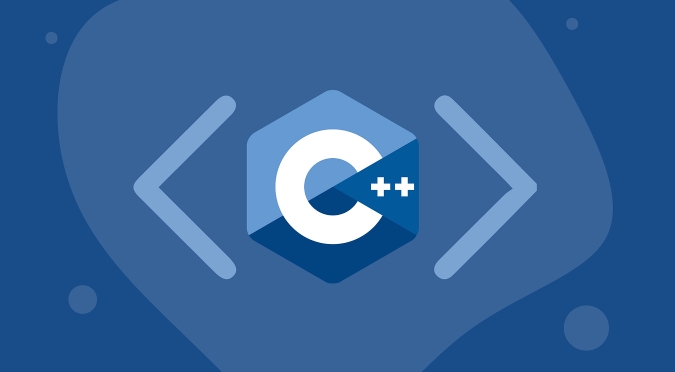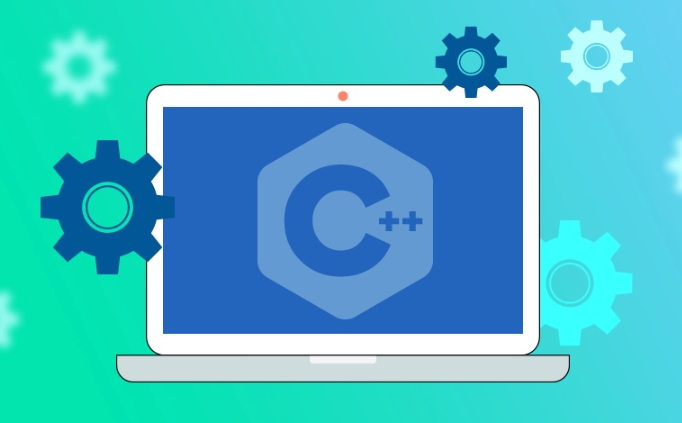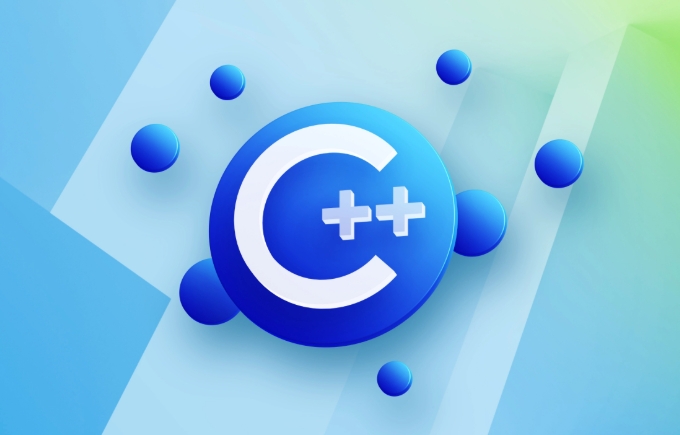Member Initialization Lists in C
In C, the member initialization list is used to initialize member variables in the constructor, especially for const members, reference members, class members without default constructors, and performance optimization. Its syntax begins with a colon and is followed by a comma-separated initialization item. Reasons for using member initialization list include: 1. The const member variable must be assigned value at initialization; 2. The reference member must be initialized; 3. Class type members without default constructors need to explicitly call the constructor; 4. Improve the construction efficiency of class type members. In addition, the initialization order is determined by the order of members declared in the class, not the order in the initialization list, so be careful to avoid relying on uninitialized members. Common application scenarios include initialization constants, references, complex objects and members that need to be passed parameter structures.

In C, the Member Initialization List is a very critical part of the constructor. Many people tend to ignore it when they first start writing classes, or just use assignments to process member variables. But in fact, in some cases, initialization list must be used, otherwise the code may be error-free or inefficient.

Let’s talk about when to use it, why, and how to use it.
What is a member initialization list?
The member initialization list appears in the definition of the constructor, immediately following the parameter list, starting with a colon, followed by a series of initialization expressions of member variables, each separated by a comma, and the last one is followed by the function body.

for example:
class MyClass {
int a;
std::string name;
public:
MyClass(int val, const std::string& str) : a(val), name(str) {
// Constructor body}
}; Here : a(val), name(str) is the member initialization list.

It is different from writing a = val; name = str; in the body of the constructor, especially on some types, this difference will affect whether the program can be compiled or run correctly.
Why can't we always use constructor body to assign values?
There are several main reasons:
const member variable : Once declared as const, the value must be specified during initialization and cannot be assigned in the constructor body.
class A { const int x; public: A(int val) { x = val; } // Error! const variable cannot be assigned };The correct way to do it is to use the initialization list:
A(int val) : x(val) {}Reference member variables : References must also be initialized and cannot be declared before assignment.
Class type members without default constructor : If your class contains a child object without default constructor, then if you do not explicitly call its constructor, you will report an error.
for example:
class B { public: B(int x) { /* ... */ } }; class A { B b; public: A() { } // Error! B There is no default constructor, it cannot be constructed automatically};Must be written like this:
A(int val) : b(val) { }Performance optimization : For class type member variables, using the initialization list can avoid the process of calling the default constructor first and then assigning values, and directly constructing it in one go.
The execution order of the member initialization list
The initialization order of member variables is not in the order in the initialization list , but in the order in which they are declared in the class.
For example:
class MyClass {
int a;
int b;
public:
MyClass() : b(20), a(b) {}
}; Although you write b(20) in the list first and then a(b) , because a is declared in the class before b , a will be initialized first. At this time, b has not been initialized, and the result is that the value of a is undefined.
Pay special attention to this point, otherwise it is easy to write bug-related code.
Common usage scenarios in actual development
- Initialize a constant member (const)
- Initialize the reference member
- Initialize object members without default constructor
- Improve performance, especially for complex objects (such as containers, custom types)
For example, if you have a class that needs to pass in configuration information:
class Config {
public:
Config(const std::string& filename) { /* Read configuration from file*/ }
};
class App {
Config config_;
public:
App(const std::string& file) : config_(file) {}
}; The initialization list cannot be omitted here, because Config does not have a default constructor.
Basically that's it. The member initialization list looks simple, but if you don't pay attention to it in actual development, it is easy to get stuck. Especially when it comes to const, references and complex objects, be sure to remember to use them well.
The above is the detailed content of Member Initialization Lists in C. For more information, please follow other related articles on the PHP Chinese website!

Hot AI Tools

Undress AI Tool
Undress images for free

Undresser.AI Undress
AI-powered app for creating realistic nude photos

AI Clothes Remover
Online AI tool for removing clothes from photos.

Clothoff.io
AI clothes remover

Video Face Swap
Swap faces in any video effortlessly with our completely free AI face swap tool!

Hot Article

Hot Tools

Notepad++7.3.1
Easy-to-use and free code editor

SublimeText3 Chinese version
Chinese version, very easy to use

Zend Studio 13.0.1
Powerful PHP integrated development environment

Dreamweaver CS6
Visual web development tools

SublimeText3 Mac version
God-level code editing software (SublimeText3)

Hot Topics
 C Initialization techniques
Jul 18, 2025 am 04:13 AM
C Initialization techniques
Jul 18, 2025 am 04:13 AM
There are many initialization methods in C, which are suitable for different scenarios. 1. Basic variable initialization includes assignment initialization (inta=5;), construction initialization (inta(5);) and list initialization (inta{5};), where list initialization is more stringent and recommended; 2. Class member initialization can be assigned through constructor body or member initialization list (MyClass(intval):x(val){}), which is more efficient and suitable for const and reference members. C 11 also supports direct initialization within the class; 3. Array and container initialization can be used in traditional mode or C 11's std::array and std::vector, support list initialization and improve security; 4. Default initialization
 Explain RAII in C
Jul 22, 2025 am 03:27 AM
Explain RAII in C
Jul 22, 2025 am 03:27 AM
RAII is an important technology used in resource management in C. Its core lies in automatically managing resources through the object life cycle. Its core idea is: resources are acquired at construction time and released at destruction, thereby avoiding leakage problems caused by manual release. For example, when there is no RAII, the file operation requires manually calling fclose. If there is an error in the middle or return in advance, you may forget to close the file; and after using RAII, such as the FileHandle class encapsulates the file operation, the destructor will be automatically called after leaving the scope to release the resource. 1.RAII is used in lock management (such as std::lock_guard), 2. Memory management (such as std::unique_ptr), 3. Database and network connection management, etc.
 What is high-frequency virtual currency trading? The principles and technical implementation points of high-frequency trading
Jul 23, 2025 pm 11:57 PM
What is high-frequency virtual currency trading? The principles and technical implementation points of high-frequency trading
Jul 23, 2025 pm 11:57 PM
High-frequency trading is one of the most technologically-rich and capital-intensive areas in the virtual currency market. It is a competition about speed, algorithms and cutting-edge technology that ordinary market participants are hard to get involved. Understanding how it works will help us to have a deeper understanding of the complexity and specialization of the current digital asset market. For most people, it is more important to recognize and understand this phenomenon than to try it yourself.
 C bitwise operators explained
Jul 18, 2025 am 03:52 AM
C bitwise operators explained
Jul 18, 2025 am 03:52 AM
The bit operator in C is used to directly operate binary bits of integers, and is suitable for systems programming, embedded development, algorithm optimization and other fields. 1. Common bit operators include bitwise and (&), bitwise or (|), bitwise XOR (^), bitwise inverse (~), and left shift (). 2. Use scenario stateful flag management, mask operation, performance optimization, and encryption/compression algorithms. 3. Notes include distinguishing bit operations from logical operations, avoiding unsafe right shifts to signed numbers, and not overuse affecting readability. It is also recommended to use macros or constants to improve code clarity, pay attention to operation order, and verify behavior through tests.
 What is a destructor in C ?
Jul 19, 2025 am 03:15 AM
What is a destructor in C ?
Jul 19, 2025 am 03:15 AM
The destructor in C is a special member function that is automatically called when an object is out of scope or is explicitly deleted. Its main purpose is to clean up resources that an object may acquire during its life cycle, such as memory, file handles, or network connections. The destructor is automatically called in the following cases: when a local variable leaves scope, when a delete is called on the pointer, and when an external object containing the object is destructed. When defining the destructor, you need to add ~ before the class name, and there are no parameters and return values. If undefined, the compiler generates a default destructor, but does not handle dynamic memory releases. Notes include: Each class can only have one destructor and does not support overloading; it is recommended to set the destructor of the inherited class to virtual; the destructor of the derived class will be executed first and then automatically called.
 Using std::optional in C
Jul 21, 2025 am 01:52 AM
Using std::optional in C
Jul 21, 2025 am 01:52 AM
To determine whether std::optional has a value, you can use the has_value() method or directly judge in the if statement; when returning a result that may be empty, it is recommended to use std::optional to avoid null pointers and exceptions; it should not be abused, and Boolean return values or independent bool variables are more suitable in some scenarios; the initialization methods are diverse, but you need to pay attention to using reset() to clear the value, and pay attention to the life cycle and construction behavior.
 Member Initialization Lists in C
Jul 19, 2025 am 02:03 AM
Member Initialization Lists in C
Jul 19, 2025 am 02:03 AM
In C, the member initialization list is used to initialize member variables in the constructor, especially for const members, reference members, class members without default constructors, and performance optimization. Its syntax begins with a colon and is followed by a comma-separated initialization item. The reasons for using member initialization list include: 1. The const member variable must be assigned value at initialization; 2. The reference member must be initialized; 3. Class type members without default constructors need to explicitly call the constructor; 4. Improve the construction efficiency of class type members. In addition, the initialization order is determined by the order of members declared in the class, not the order in the initialization list, so be careful to avoid relying on uninitialized members. Common application scenarios include initialization constants, references, complex objects and parameter-transferred constructions
 How to convert a string to uppercase or lowercase in C ?
Jul 19, 2025 am 01:34 AM
How to convert a string to uppercase or lowercase in C ?
Jul 19, 2025 am 01:34 AM
InC ,stringscanbeconvertedtouppercaseorlowercasebyprocessingeachcharacterusingstd::toupperorstd::tolowerfrom1.Casteachcharactertounsignedcharbeforeapplyingthefunctiontoavoidundefinedbehavior.2.Modifycharactersinplaceorcopythestringifpreservingtheori







